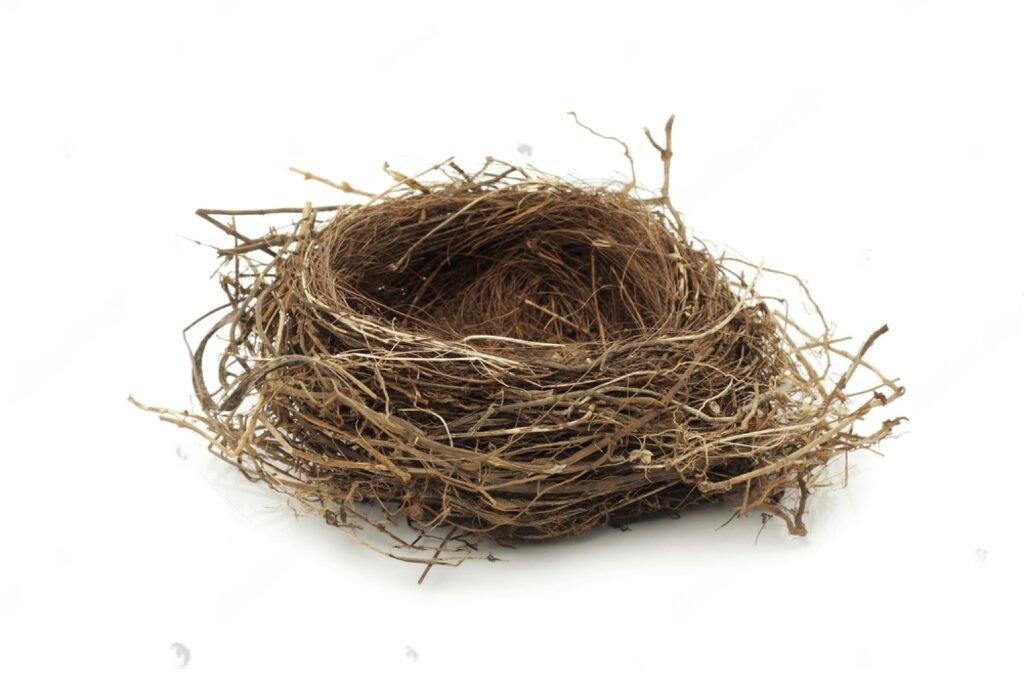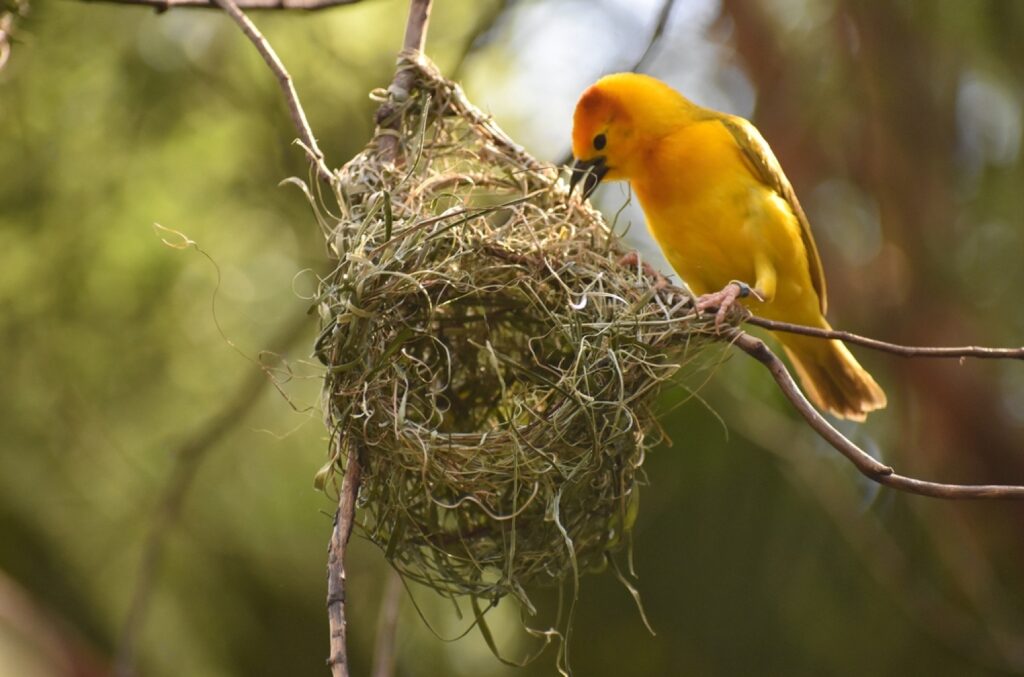
Getting rid of a bird’s nest can be a challenging and potentially dangerous task. Depending on the type of bird, where the nest is located, and the time of year, the process of removal can vary. In some cases, it is illegal to remove a nest, so it is important to understand the laws and regulations of the area before taking any action. Additionally, most birds are protected by law and should not be disturbed. Here are some steps to safely and legally get rid of a bird’s nest.
How To Get Rid Of Birds Nest

Birds’ nests can be a nuisance, but they can also be a sign of a healthy environment. They provide a safe place for baby birds to grow and they can add to the beauty of a backyard. However, if a bird’s nest is in an undesirable location, it is important to remove it. The best way to do this is to wait until the birds have finished nesting for the season before attempting to remove the nest. It is important to be cautious when removing a bird’s nest, as disturbing the birds during nesting season can be detrimental to their health and well-being. If the birds have already left the nest, it is safe to remove it. To do this, wear protective gloves to avoid coming into contact with any parasites or bacteria that may be in the nest. Use a stick or a broom to carefully knock the nest down and then sweep it into a dustpan for proper disposal.
Is It Illegal to Remove a Bird’s Nest?
In most states, birds are protected under the Migratory Bird Treaty Act (MBTA). This law makes it illegal for individuals to take, possess, import, export, transport, sell, purchase, barter, or offer for sale, purchase, or barter, any migratory bird, their eggs, parts, or nests, except when authorized by a valid permit.
State and local laws may also provide additional protections. For example, some states may have laws that make it illegal to remove a bird’s nest regardless of whether it is actively in use or not. Other states may have laws that protect certain species of birds but not others.
In addition to legal restrictions, experts recommend that you leave bird nests alone whenever possible. Removing a nest can cause significant stress to the bird, and even if done with a permit, can disturb the bird’s habitat. To minimize the impact on birds, it is best to avoid removing nests during the breeding season or when the nest is actively in use.
Materials Needed To Remove A Bird Nest
- Ladder: A ladder is essential for safely reaching bird nests that are too high to access from the ground.
- Work Gloves: Work gloves will help protect your hands from scratches and cuts when handling the nest.
- Plastic Bag: A plastic bag will make it easy to transport the nest from the area.
- Dustpan and Brush: A dustpan and brush will make it easier to sweep up any debris left behind.
- Vacuum: A vacuum will make it easier to clean up any remaining feathers or nesting materials left behind.
- Disinfectant: Disinfectant can help kill any bacteria or germs left behind by the birds.
- Protective Clothing: Protective clothing, such as a face mask and gloves, should be worn when working with bird nests to protect yourself from any potential disease or infection.
How To Identify A Birds Nest

- Look for a nest in trees, shrubs, and other vegetation. Many bird species build nests in trees, shrubs, and other vegetation. Carefully scan the area for a nest, which may be found in the crook of a branch or tucked away in a bush or tree.
- Look for a cup-shaped object. Many bird nests are constructed in a cup shape and may be made of sticks, grasses, mud, twigs, feathers, and other materials.
- Look for eggs. If you find a cup-shaped nest, look for eggs inside. If you see eggs, you can be sure the nest belongs to a bird.
- Look for feathers. Some birds use feathers to line the inside of their nests, so look for feathers near the nest or inside the nest.
- Listen for bird calls. Some birds, like chickadees and wrens, will make distinctive calls near their nest. Listen for these calls and you may be able to locate the nest.
- Watch for adult birds. Sometimes, the best way to identify a bird’s nest is to watch for the adult bird, as they will often come and go from the nest.
How To Locate Birds Nest

- Look for Signs of Activity: You can often spot a nest simply by observing birds around the area. Birds will often fly back and forth to a nest to feed their young, so keep an eye out for any birds that seem to be making regular trips to a certain area.
- Look for Nest Material: If a nest is nearby, you may be able to spot materials that birds have used to build the nest. Look for twigs, grass, feathers, or other material that has been collected and woven together to form a nest.
- Listen for Chirping: If a nest is nearby, you may hear the chirping of chicks or the calls of adult birds. Listen for any birdsong coming from a particular area, as this may indicate the presence of a nest.
- Look for Nesting Structures: Some birds build nests in specific structures, such as tree cavities, chimneys, eaves, or even birdhouses. If you can find these structures, you may be able to spot a nest inside.
- Use Binoculars: If you’re having trouble spotting a nest with the naked eye, try using binoculars to get a better view of the area. This can help you spot any birds or nests that may be too far away to see without magnification.
- Follow the Birds: If you’re still having trouble locating a nest, you can try following a bird as it flies back and forth from the nest. This can help you pinpoint the exact location of the nest.
When to Take Out Bird Nests
Bird nests should be taken out of the premises when they are located in an area that presents a danger to the health and safety of people, such as in attics, chimneys, and vents. Nests located in these areas can create a fire hazard, provide an entry point for pests, and can interfere with airflow throughout the building. In addition, bird nests can present a health hazard due to the potential for droppings and feathers to accumulate in the area. If a nest is found in a location where it cannot be safely removed, then it is best to call a professional wildlife removal service. In some cases, it may be necessary to relocate the nest and birds to a safe location.
Efficient Method To Properly Get Rid Of Bird Nests

- Identifying the nest: The first step to properly getting rid of bird nests is to identify the type of bird that built the nest. This is important in order to determine the proper course of action as different birds may require different approaches.
- Determine the legality of removal: Before anything else, it is important to determine whether or not it is legal to remove the nest. In some areas, there may be restrictions or even laws that prohibit the removal of certain types of bird nests.
- Choose the right approach: Different approaches may be necessary depending on the type of bird and the type of nest. For example, if the nest is made of twigs and leaves, then a broomstick can be used to remove it. However, if the nest is made of mud and feathers, then a shovel or trowel may be necessary in order to properly remove it.
- Wear protective gear: It is important to wear protective gear such as gloves and a mask when attempting to remove a bird nest. This will help protect against any potential health hazards from the bird droppings or nesting material.
- Dispose of the nest properly: Once the nest is removed, it should be disposed of properly. This means putting it in a sealed bag and placing it in the trash or compost.
- Monitor the area: After the nest has been removed, it is important to monitor the area to make sure that the birds do not return and rebuild the nest. If the birds do return, then it may be necessary to take further steps in order to deter the birds from returning.
Why Do You Need to Remove Bird Nests?

Bird nests can be a nuisance and sometimes even a hazard when they are built in or around structures on our property. Bird nests can, in some cases, interfere with the functionality of our homes, businesses, and other structures. They can also introduce unsanitary conditions, cause structural damage, and attract other pests.
Nests built in or around our homes, businesses, and other structures can interfere with the functionality of these structures. Bird droppings are acidic, and over time can corrode or damage any surface or material that it is left on for long periods of time. This includes roofs, gutters, windows, and even the paint job of our homes.
Nests can also introduce unsanitary conditions. Bird droppings can spread bacteria, fungi, and parasites. These can cause health problems for humans and animals alike.
The presence of bird nests can also attract other pests. These pests may include rodents, snakes, and other insects. These pests can cause damage and spread disease.
Finally, bird nests can be a safety hazard. Nests that are built in or around a structure can block air vents, exhaust fans, and other important equipment. This can reduce airflow, leading to health and safety risks.
FAQ
Q. How do get rid of the bird nest on the rooftop
A. The best way to get rid of a bird’s nest on a rooftop is to deter the bird from nesting in the first place. Some deterrents include: placing a plastic owl or hawk near the area, using bird netting, installing an electric track, or using a sonic bird repellent. If the nest has already been built, it should be removed carefully using gloves and placed in a safe area away from the house.
Q. How to get rid of a birds nest with eggs
A. If the nest is low enough to safely reach, first use gloves and a cloth to carefully remove the nest and eggs. Place the nest and eggs in a cardboard box lined with a cloth and put it in a safe place away from predators. If the nest is too high to reach, wait until the eggs have hatched and the birds have left the nest. Then, use a ladder to safely remove the nest. If the nest contains mites or other pests, dispose of it in a sealed container.
Conclusion
Getting rid of birds nesting is a tricky process that requires patience and persistence. It is important to remember that birds are protected under the law and it is illegal to harm them or their nests. The most effective methods of getting rid of birds nesting include discouraging them from nesting in the first place through exclusion methods, such as netting, spikes, and sound deterrents, as well as removing any existing nests. While it can be difficult to get rid of birds nesting, it is possible with the right tools and techniques.

